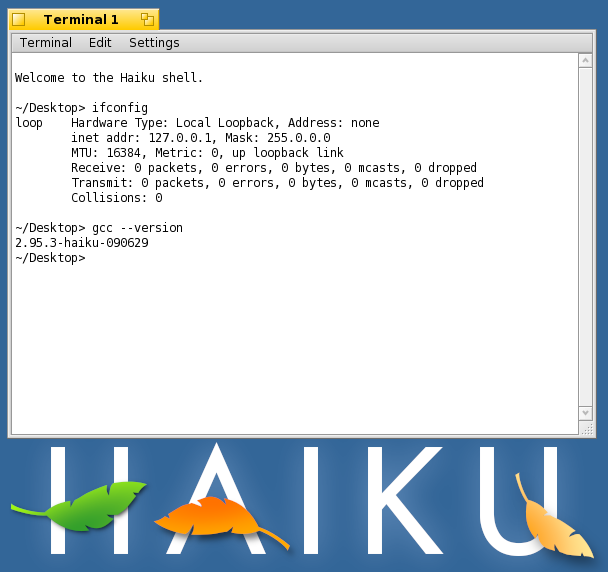Once upon a time, all the way back in 1998, I remember downloading a demo version of BeOS on some kind of live HD partition hosted under Windows. I booted into it twice and couldn’t find a good reason to do it a third time. However, there is that bustling community of developers developing the clone of BeOS named Haiku. This article at Ars Technica leads me to believe that the Haiku OS has reached some kind of development milestone (R1 alpha1).
Of course, this all reminds me that FFmpeg does have 1 or 2 developers who like to make sure that the application still builds and runs on Haiku. But are there any takers for running FATE continuously on Haiku? I installed the ISO image in a VMware session but was unable to connect to a network. I’m a little surprised Haiku doesn’t at least support the VMware network device (or does it? Perhaps I need to manually configure it somehow).

I think I may finally understand the compelling reason to continue supporting gcc 2.95 in FFmpeg: that’s the default one installed in BeOS. This strikes me as odd since BeOS was alleged to be based largely on C++ and gcc’s C++ language support as of 2.95 was known to be less than stellar. Perhaps the OS builders simply limited themselves to a sane subset of the language which could conceivably make Be programming halfway tolerable.
For my part, I’m wondering how to program Haiku/Be in the first place. Haiku is supposed to reimplement Be’s C++ API, but where is that defined? Is O’Reilly’s online Be programming book the last word on the matter? I should check my boxes and see if I still have a giant book of Be that a friend gave me a long time ago for no good reason. He must have gotten the impression I was interested in hacking operating systems or something.
